(or, Why some people think we’re crazy)
Last time we had beef butchered I asked the locker to save us 20 pounds of fat. They don’t render lard anymore, because their machine broke and there just isn’t much call for it. They gave me a look, but over time they’ve become pretty accomodating to my many crazy requests.
But I think they gave us a little more than 20 pounds: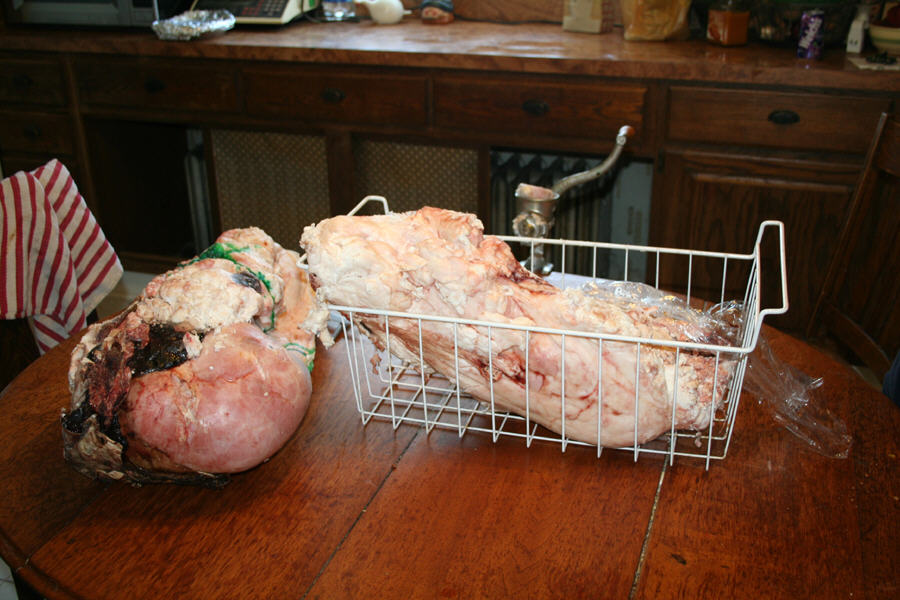
We only got through one of these chunks. The whole point of this little exercise is to learn to make soap. So yesterday we set about with Step 1, rendering the beef fat into tallow. I cut off chunks and Matt fed them through the meat grinder. The kids are rather excited about the prospect of making our own soap, and they all wanted to help with the grinding.
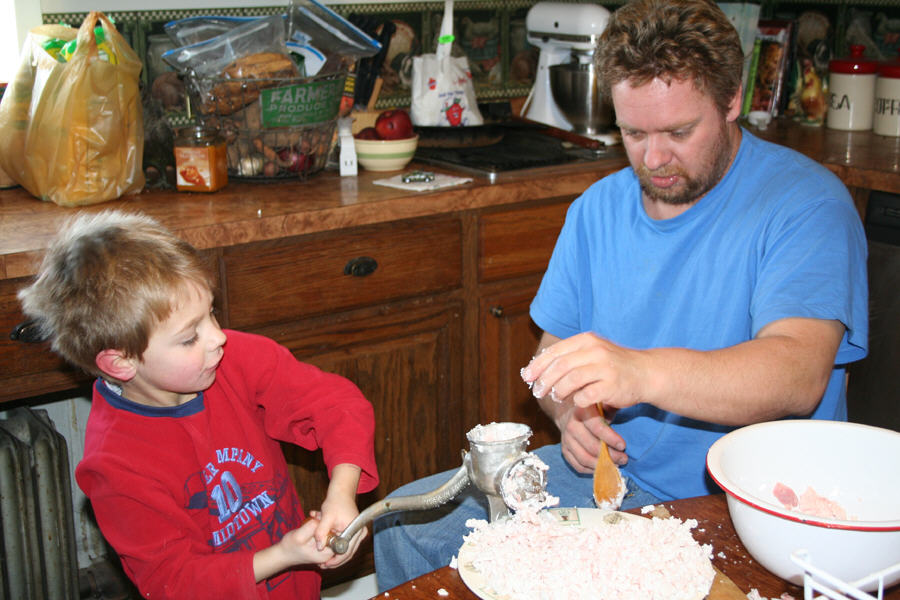
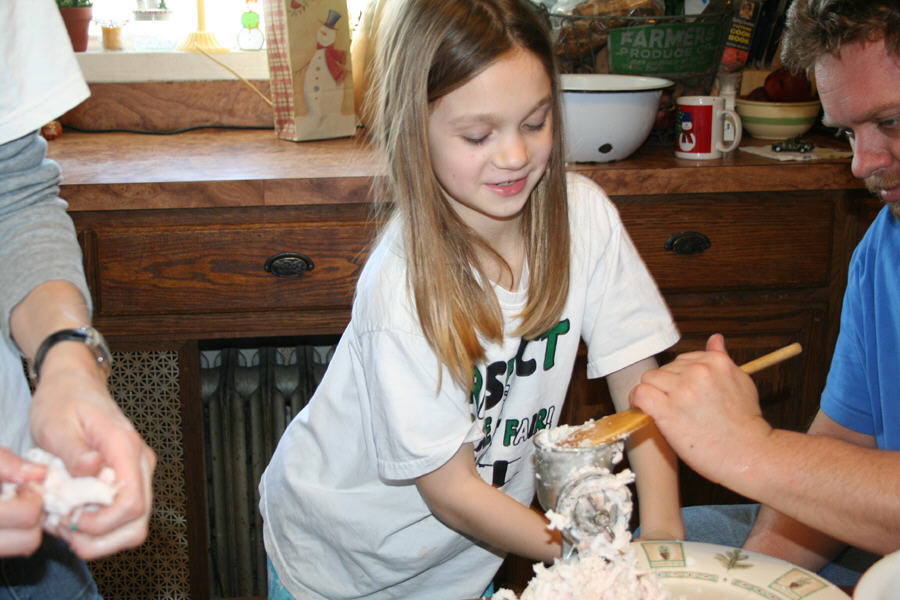
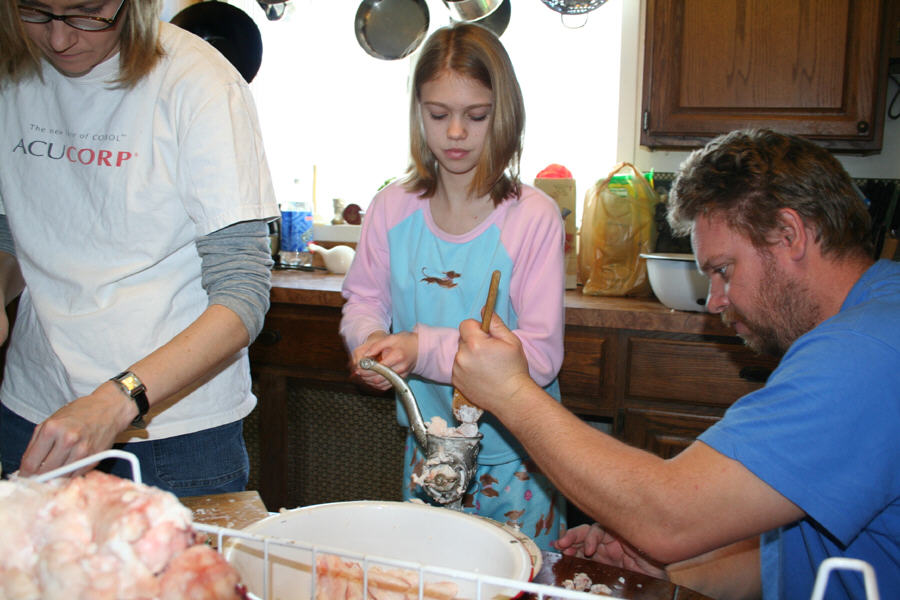
I started with an inch or two of water in my largest stock pot, and as Matt got a dinner plate filled with ground fat I’d add it to the pot. We brought the fat to a boil and then turned it down to a simmer, periodically skimming off the cracklings and unrenderables.
We had several bowls ready, each with a little water in the bottom. Matt ladled the fat into the bowls and we let them set for a day.
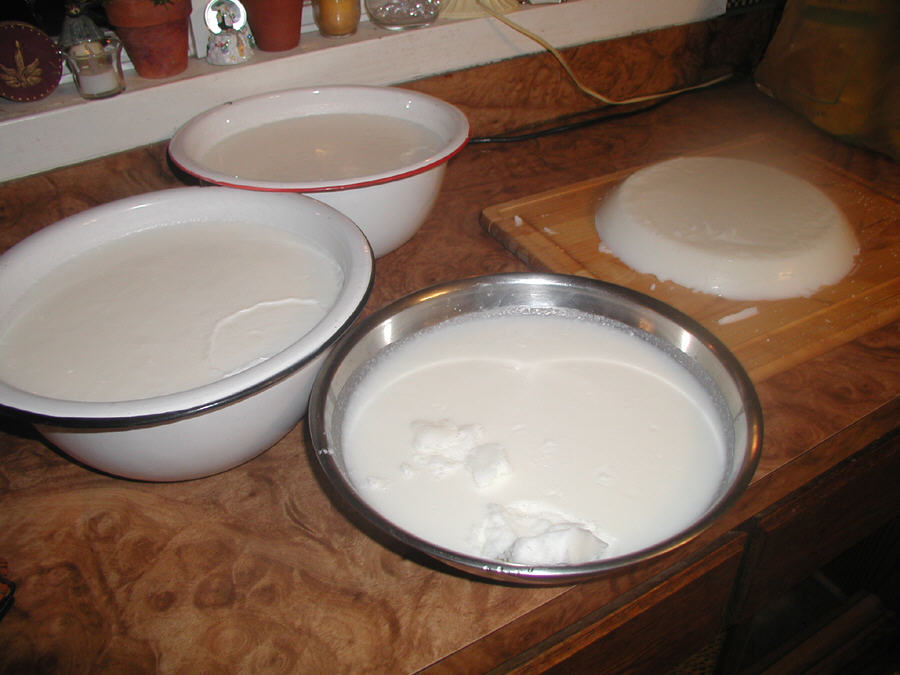
Tonight I cut it into pieces, seran wrapped the pieces, and put them in the freezer. I hope we did this right. The directions we used said that once the tallow was set there would a gelatinous layer on the bottom that would need to be rinsed off under cold running water. We didn’t have anything like that. Anyone out there know? Perhaps because when we ladled it into the bowls most of the “junk” was left in the bottom of the stockpot. The fat that went into the bowls was very clean.
We ended up with 17 pounds of cakes. They’re really pretty, an absolutely pristine white. I’m tempted to take some and make a pie crust, like my mother-in-law used to.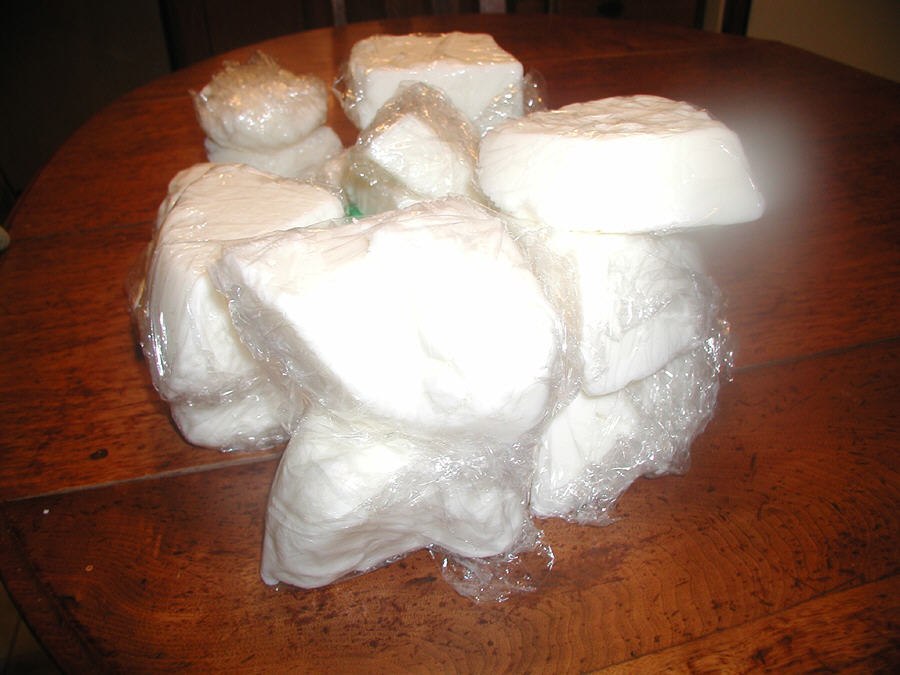
Next step is to find a good beginner soap recipe, and acquire a soap pot and the other necessary tools and ingredients. Advice?


Is there much difference between beef and hog fat when it comes to soap making? The last time we had a hog butchered, we were told we had to wait an additional 6 weeks because we wanted rendered lard – – and then we never got it! Can’t wait to see the finished product! Keep us posted 🙂
We’ve rendered beef fat twice and made soap on four different occasions in the last year. We are fortunate enough to have a stove we can use outside for the process. The recipe I used had both lard and tallow, it’s said to make a better soap that tallow alone. The tallow makes for a white and hard soap. Lard produces a softer, yellower soap. The only other things you’ll need are lye and soft (rain) water. It’s kind of a nasty (caustic) process, can you do it outside? Linda
Lisa – as far as amount of lye, lard and tallow seem to use the same amount according to http://www.soapcalc.com. But as Linda says, they produce different hardnesses of soap.Linda – I don’t have a setup to do it outside. Maybe I can talk Matt into buying a new stove for the house, so we can move the old one to the basement for soap making and summer canning?? That would be nice 🙂
Golly, I didn’t even know that beef fat was “tallow” and hog fat was “lard”. I LOOOOOOVE blogs for all the practical knowledge that can be acquired and shared! We have a two burner Coleman camp stove – – wonder if that would work. I’d be happy to help when you’re ready (wouldn’t THAT be a sight!).
Thank you so much for sharing this! Nothing like real pictures to make things look real! And to think that our ancestors did this all the time- and we’ve got to find out about it in books!You’ll have to let us know how the soap turns out!
Hi, thought I would give you my thoughts on soapmaking. If your not going into the soap making business you really don’t need any special tools for the trade. I make many, many batches a week and I still use my 3 trusty stainless steel stock pots for melting the oils and mixing by batches. Stainless steel will not react to lye like some metals.When your ready just mix your lye outside or with windows open and no kids/animals around. It emmits a very foul/toxic odor and raises to over 200 degrees when mixed with water it can burn you very easily! You can mix it in an old pitcher that you won’t use for something else later on- I label all of my things so they don’t get used someplace else in the kitchen.Your oils only need to melt, do not overly heat them though. It will hurt the oils. For more info on soapmaking check out the soapguild.org The links page has tons of info for new soapers.Good Luck!
I never have used tallow in making soap but I have used someone else’s that was pure tallow soap. It definitely makes a really hard white soap.The thing you have to be the most careful with… is in not letting it take over your life, LOL!Use a plastic spoon to stir with instead of wood. (I made that mistake when I was starting out – the wood splinters pretty quickly!) Always pour the lye into room-temp water. (I use plastic pitchers for that.) A few books will tell you to pour the water onto the lye, but don’t ever do that – it’s very dangerous.A lot of books go on and on about matching the temperatures of the lye/water and fats/oils exactly, but I’ve never found that to be necessary. But if they are too hot the soap can “volcano” up on you.Oh yeah and DEFINITELY use eye protection.Cathy Miller’s page has a lot of good resources. http://www.millersoap.com/Feel free to email me if you have any particular questions. Have fun!
we get our soap from http://www.xanga.com/stellas_terrashe is amazingly nice and a friend of tabitha. i’d expect she’d be really helpful. we have lots of fat to render but it’s kinda scary with little kids around. we’ll get brave soon.lots of fun
I make soap the old fashion way. I cook it until it is done. I have demonstrated soapmaking at a mountain skill days in a North Georgia state park over an open fire using my grandmother’s old wash pot that she made soap in. At home, I use a turkey frying pot over a propane gas fish cooker and I do it outside because it is safer. It is a lot easier to control the heat with the cooker rather than doing it over an open fire.A plastic spoon is a bit small when you make it in the quantity that I do.At another demonstration, I made a paddle out of sassafras. This, too, was made the old fashion way with a draw knife, spokeshave and a shaving horse.I used the peg and wedge method of holding the blade in the handle. It works well but the next paddle I make, I am going to make the handle out of sassafras and the blade out of cedar. When I could, I would render tallow from fat I would get at a packing house. During deer season, fat is hard to find.That tallow you have looks real good and when you run it through a grinder like that, it will make most of the “trash” fall to the bottom and give you a beautiful cake tallow. Grandma would have probably just cut it up in little cubes because grandpa would have been using the grinder to make sausage.Thank you for you for sharing this with us. It was a very good source of information and fun to read.